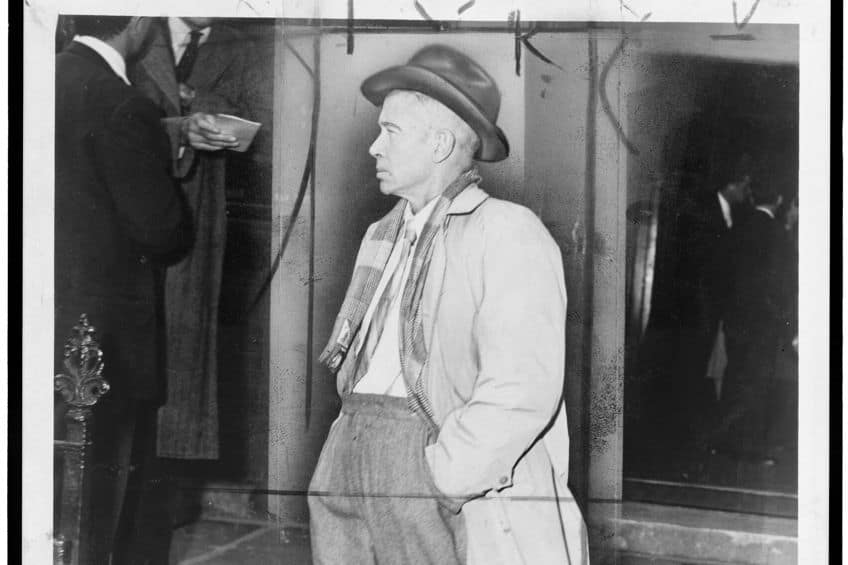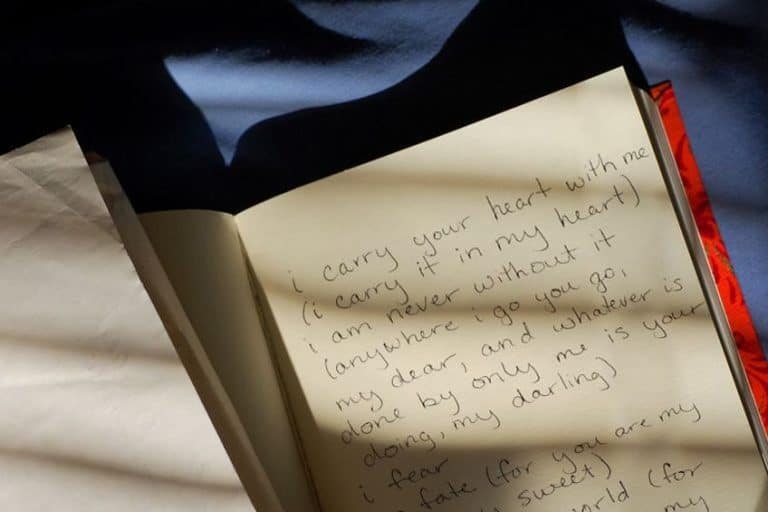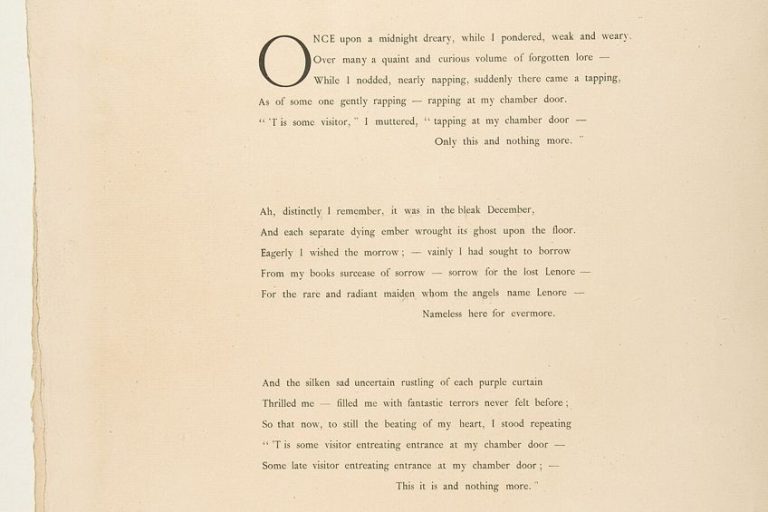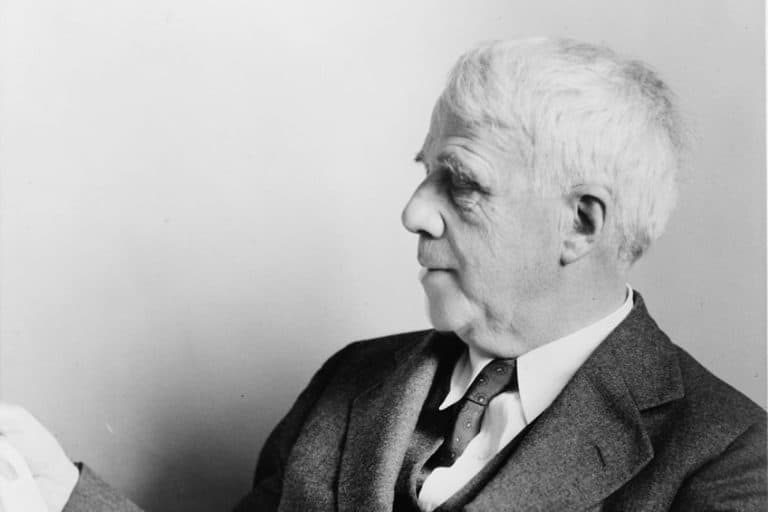ee cummings Poems – A Comprehensive List of 10 Famous Works
Today, we will be exploring a number of ee cummings poems, and while we cannot examine all of the poems that he produced in his life, we certainly can have a look at a few of the most famous ones. This article will attempt to show why the many ee cummings poems out there have continued to have such a powerful cultural and literary weight to them and, hopefully, you will enjoy learning about them. If it fancies you to learn about a few ee cummings poems, then this article should be just for you!
A Few ee cummings Poems
There are very few poets who achieved the kind of fame that ee cummings attained. His work is seen as some of the most influential in the Modernist movement and free verse poetry has been irreversibly influenced by the work that he produced during his lifetime. We are only going to look at ten of his poems, but this should offer a good general understanding of why he was considered to be such an important figure in poetry. His constant use of experimentation and his refusal to conform to norms have made him famous, and the fact that he spelled his name in lowercase has probably contributed to that. So, let’s check out a few ee cummings poems!

spring omnipotent goddess Thou (1920)
| Date Published | 1920 |
| Type of Poem | Lyrical poem |
| Rhyme Scheme | None |
| Meter | None |
| Topic | Personification of spring |
spring omnipotent goddess Thou is a poem that presents spring as a personified goddess that enters the cityscape and brings with it a change for those who encounter it. The poem is a great example of the kinds of poems that ee cummings wrote as it uses a bouncing rhythm throughout while using unusual terminology and it occasionally even invents some along the way, or perhaps more accurately, it supplements existing words with new forms that make it strange and different.
This may be one of the older ee cummings poems, but it still manages to retain a lot of what brought this poet such acclaim throughout his career.
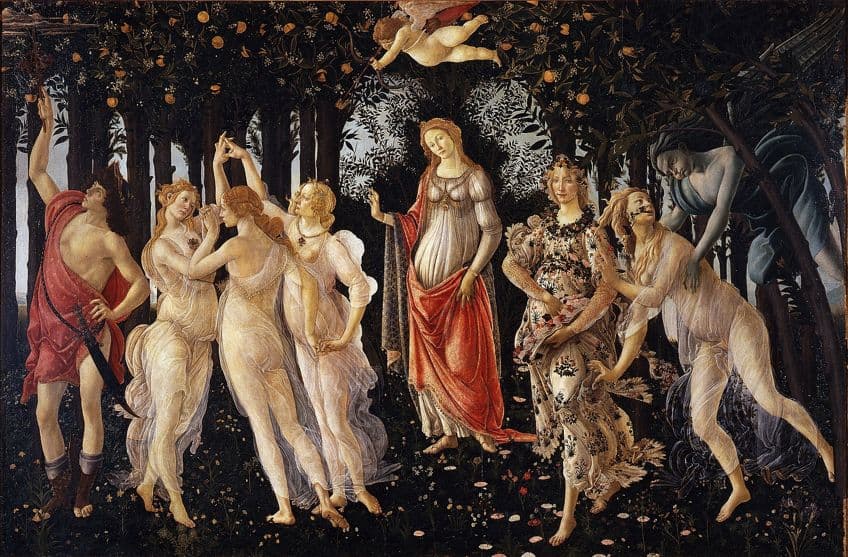
Puella Mea (1920)
| Date Published | 1920 |
| Type of Poem | Love poem |
| Rhyme Scheme | Variable |
| Meter | Variable |
| Topic | Love |
Puella Mea is one of the earlier ee cummings poems on this list and in his career, and it is quite unlike many of the other poems that would become more associated with this unusual and experimental poet. It is a lengthy poem that explores a deep love and desire for a figure who the speaker loves more than anyone else. The poem discusses intimate longing and a strong need for romantic love.
While the concept of love is not one that ee cummings was less likely to write, but the length of this particular poem would be a little different from many of the other, far shorter texts that he was more accustomed to producing.

may i feel said he (1923)
| Date Published | 1923 |
| Type of Poem | Dialogue poem |
| Rhyme Scheme | AAAA |
| Meter | Irregular |
| Topic | Dialogue between individuals |
may i feel said he is a perfect encapsulation of the way that many ee cummings poems manage to capture the delightful nature of language itself. This poem is highly repetitive with “he” and “she” being used over and over again to show a relationship and conversation between these two figures. The two converse with one another in playful tones and are engaging in a sexual affair with one another.
The poem explores their discussions of desire and consent with one another, and the way in which this conversation is produced, despite making minimal use of vocabulary, is expertly conveyed to the reader.

[All in green went my love riding] (1923)
| Date Published | 1923 |
| Type of Poem | Lyrical poem |
| Rhyme Scheme | None |
| Meter | None |
| Topic | Relationships |
[All in green went my love riding] is a rather peculiar poem about relationships. It uses the imagery of a hunt, and this metaphor is used throughout as they hunt through the lush forest. The speaker is hunting the deer that is his partner, and even though he knows that through his hunt, he has ultimately pierced the heart of the one he has pursued, he has also pierced his own heart.
A relationship is not always a pleasant thing, and terrible things can be done to one another, and it may seem permissible during the act, but one will eventually realize that none of this was a positive thing to have done.

[since feeling is first] (1926)
| Date Published | 1926 |
| Type of Poem | Love poem |
| Rhyme Scheme | None |
| Meter | None |
| Topic | Love |
[since feeling is first] is concerned with a carefree attitude taken towards love and the activities that we do with one another when we are in love. The poem wants us to live for that love in the moment rather than confining ourselves to a sense of overwhelming self-analysis. We should embrace what love has to offer to us rather than thinking about it in too much depth. There are many poems that fixate on the future with regard to love, and how a beloved can become a part of us, but this poem instead wants us to live each day like it will be the last.
Seize the day!

i sing of Olaf glad and big (1931)
| Date Published | 1931 |
| Type of Poem | Free verse poem |
| Rhyme Scheme | None |
| Meter | None |
| Topic | Defiance and courage |
i sing of Olaf glad and big is all about the central character of Olaf. This text is rather unique in terms of the ee cummings poems that we have examined thus far in that it is a lengthier narrative text rather than one that simply conveys a sense of feeling. This character of Olaf is a soldier who remains defiant and courageous throughout his time being tortured.
The text is an exploration of the courage required to stick by one’s beliefs regardless of whatever stands in the way and seeks to repress you.

[anyone lived in a pretty how town] (1940)
| Date Published | 1940 |
| Type of Poem | Narrative poem |
| Rhyme Scheme | None |
| Meter | None |
| Topic | A community |
[anyone lived in a pretty how town] is about a little town. It’s a town in which nothing much happens and everyone keeps to themselves. However, there is a person named “anyone” in this poem, and he does not much fit in with this place until he finds a partner named “no one”, and they fall in love with one another. The poem has a rather allegorical note to it as these two characters and even the town itself do not have proper names.
This allows the poem to be about anyone and it can be far more easily universalized thanks to that fact.

pity this busy monster, manunkind (1944)
| Date Published | 1944 |
| Type of Poem | Irregular sonnet |
| Rhyme Scheme | None |
| Meter | None |
| Topic | Progress |
pity this busy monster, manunkind is one of the best-known ee cummings poems, and it is a truly phenomenal text that focuses on the destructive forces of progress that mankind unleashes upon the world. The text makes use of an unusual arrangement of invented terms, strange dashes, and strange topography to tell the story of humanity progressing too quickly and causing issues through that level of progress.
One of the most poignant aspects of the poem comes near the end when the speaker suddenly cuts himself off to effectively give up on what humanity has done with its intelligence.

[i carry your heart with me(i carry it in] (1952)
| Date Published | 1952 |
| Type of Poem | Love poem |
| Rhyme Scheme | None |
| Meter | None |
| Topic | Love |
[i carry your heart with me(i carry it in] is a poem about love. It has a deeply intimate tone to it as it follows the speaker expressing the way that they feel about their beloved. They speak about their lover having control of their heart in the typical sense that many make use of heart metaphors when it comes to love. However, the use of brackets and uncommon construction makes this ee cummings poem a potent one.
Statements and words intermingle with one another as the speaker tries to convey their immense love and adoration for their lover.

l(a (1958)
| Date Published | 1958 |
| Type of Poem | Concrete poem |
| Rhyme Scheme | None |
| Meter | None |
| Topic | Solitude |
l(a is considered to be one of the greatest ee cummings poems for good reason. It is immensely unique and distinct even amongst the other poems that this writer produced. The reason that this is the case is that it is written as a single vertical line. Most of these lines have two letters in them. There is an “l” that begins the poem with the words “a leaf falls” within brackets followed by the remainder of the word that started with that “l”, becoming “loneliness”. It is a poem that requires the reader to take it from its broken status and reassemble it to truly understand. There is a message here about being alone as a solitary leaf falls from a tree. The image of a single leaf has long been associated with solitude, and that is used to strong effect here.

We have spent this article examining the work of ee cummings. There are literally thousands of ee cummings poems in the world and I have only given you a meager selection of ten! It is obviously immensely outrageous of me to do such a thing, but it should have also given you a good overview of the kind of work for which he was so well known. There are loads of other ee cummings poems out there though, and if you want to find them, you just need to search for them!
Frequently Asked Questions
Who Was ee cummings?
The man known as ee cummings, whose actual name was Edward Estlin Cummings, was an American writer who is best known for his poetry. He is generally seen as one of the most important Modernist poets, and his work would come to be immensely influential throughout his life and long after his death.
What Was Unique About the Poetry of ee cummings?
Some of the most unique aspects of ee cummings’ poems was that they essentially broke many of the rules we would often associate with poetry. For instance, he would make use of strange typography, make up new words, refuse to stick to standard line lengths, and would have highly visual poetry. This immensely experimental nature has led to his poetry being very influential in free verse poetry into the present day.
Why Did ee cummings Write His Name That Way?
While you can spell the name of ee cummings with upper-case letters, that is not how we have traditionally done things. His work was noted for its incredibly experimental style and so writing it in this way has been something of a means of reverence for the refusal to follow the norms that he expressed in his writing. Many publications of his will spell it with the upper-case letters, but writing it in lowercase is far more interesting, isn’t it?
What Literary Movement Was ee cummings a Part Of?
The many ee cummings poems out there form part of Modernism. This was the movement of which he was a major part. His work in Modernist poetry would inspire many others to follow in a similar path with their own poetry, but his highly experimental style can often be seen as an ancestor of the many others who have followed suit in the years since.
What Are the Most Famous Poems by ee cummings?
There are far too many ee cummings poems in the world, but some of his best known are those such as may i feel said he (1923), pity this busy monster, manunkind (1944), and l(a (1958). This is a rather paltry list though, even more so than the article as a whole. However, if you want to find some more, they are all over the place and can easily be found.
Justin van Huyssteen is a freelance writer, novelist, and academic originally from Cape Town, South Africa. At present, he has a bachelor’s degree in English and literary theory and an honor’s degree in literary theory. He is currently working towards his master’s degree in literary theory with a focus on animal studies, critical theory, and semiotics within literature. As a novelist and freelancer, he often writes under the pen name L.C. Lupus.
Justin’s preferred literary movements include modern and postmodern literature with literary fiction and genre fiction like sci-fi, post-apocalyptic, and horror being of particular interest. His academia extends to his interest in prose and narratology. He enjoys analyzing a variety of mediums through a literary lens, such as graphic novels, film, and video games.
Justin is working for artincontext.org as an author and content writer since 2022. He is responsible for all blog posts about architecture, literature and poetry.
Learn more about Justin van Huyssteen and the Art in Context Team.
Cite this Article
Justin, van Huyssteen, “ee cummings Poems – A Comprehensive List of 10 Famous Works.” Art in Context. March 18, 2024. URL: https://artincontext.org/ee-cummings-poems/
van Huyssteen, J. (2024, 18 March). ee cummings Poems – A Comprehensive List of 10 Famous Works. Art in Context. https://artincontext.org/ee-cummings-poems/
van Huyssteen, Justin. “ee cummings Poems – A Comprehensive List of 10 Famous Works.” Art in Context, March 18, 2024. https://artincontext.org/ee-cummings-poems/.


